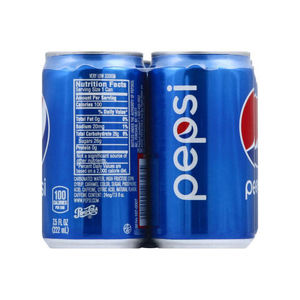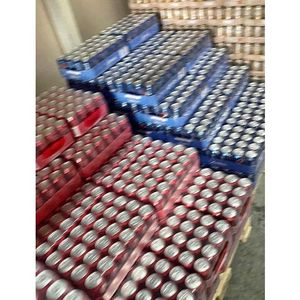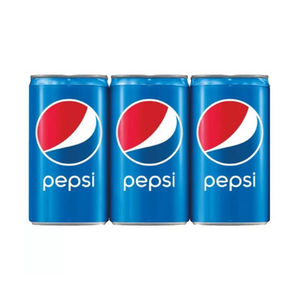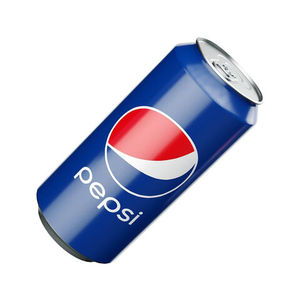(1561 products available)


























































































































































































The types of Pepsi bottles are different kinds of containers made for holding Pepsi drinks. They come in many different styles. Some are made of glass, like the old-fashioned bottles. Some are made of plastic and can be thrown away after use. Pepsi has also made new, greener bottles that are better for the environment. These bottles are made from materials that can be recycled more easily. Pepsi offers many bottle types, so people can choose how they want to enjoy their drinks.
Glass bottles
The glass bottle is the old packaging of the Pepsi brand. These bottles are reusable, which means they can be returned to the company to be used again. Glass bottles keep drinks fresh and tasty. They have a heavy and fancy feel. Glass bottles last a long time without breaking. However, the initial cost of glass bottles is high. They also crack or break if they fall. Glass bottles are better for the environment. They can be reused many times and recycled easily.
Plastic bottles
Plastic bottles are among the most popular Pepsi bottle types. They are made from PET (polyethylene terephthalate) material. People all over the world use them widely. These bottles are lightweight and unbreakable. This makes carrying them around or bringing them along when traveling easier. Unlike glass bottles, these will not break if dropped. Most plastic bottles used for Pepsi and other drinks can be recycled. However, the recycling process uses a lot of energy. It takes oil and gas a long time to become plastic waste again into new plastic.
Eco-friendly bottles
Pepsi has introduced new eco-friendly bottles. They aim to reduce the waste that harms the environment. Pepsi's eco-friendly bottles are made from recycled plastic. They are meant to be reused. Pepsi also created paper bottles. They are made mostly from paper, not plastic. These bottles are easier to recycle and break down faster than regular plastic bottles. Eco-friendly bottles are a better choice for protecting the planet. They help reduce pollution and save resources.
Standard Round Plastic Bottles:
The standard round plastic bottle is a staple design for many beverages, including Pepsi. This bottle typically features a cylindrical shape with a round base, allowing for easy gripping and handling. The bottle is made of lightweight PET (polyethylene terephthalate) plastic, which is recyclable and provides durability. It often comes in various sizes, ranging from half a liter to two liters, catering to different consumption needs. The standard round plastic bottle is usually capped with a screw top lid, ensuring a tight seal to maintain the carbonation and freshness of the drink. In terms of branding, this bottle is designed to showcase the Pepsi logo and branding elements prominently, often with a sleek and modern aesthetic to appeal to consumers. Overall, the standard round plastic bottle is a practical and recognizable packaging design that has become commonplace in the beverage industry.
Standard Square Plastic Bottles:
The standard square plastic bottle is another common packaging design used for various beverages, including Pepsi. As the name suggests, this bottle features a square shape with four equal sides, providing stability and ease of storage. Like the round bottle, the standard square plastic bottle is typically made of lightweight PET plastic, ensuring durability and recyclability. These bottles also come in various sizes and are often sealed with a screw top lid. The square design offers a unique and distinctive appearance compared to the round bottle, making it easily recognizable on store shelves. The branding elements, including the Pepsi logo, are prominently displayed on the square bottle as well, maintaining a modern and appealing look. The standard square plastic bottle is a practical choice for packaging, offering advantages such as preventing rolling and maximizing label space for marketing purposes.
Glass Pepsi Bottles:
Glass Pepsi bottles are a classic packaging option that harks back to earlier times when glass was a popular material for beverage containers. These bottles are typically made of sturdy glass, known for its non-reactive properties and ability to provide a premium feel. Glass bottles can come in various shapes and sizes, including the iconic long-necked bottle and the shorter, squatter bottle. One of the advantages of glass bottles is their ability to maintain the drink's freshness and taste, as glass is impermeable to gases and liquids. This makes glass bottles an excellent choice for preserving the carbonation and flavor of the Pepsi. Moreover, glass bottles are easily reusable and recyclable, making them an environmentally friendly option. While glass bottles may be heavier and more fragile compared to plastic alternatives, they offer a sense of nostalgia and a perception of higher quality that can enhance the overall drinking experience.
Pepsi Throwback Bottles:
Pepsi Throwback bottles are a special packaging design that pays homage to the brand's roots and vintage style. Pepsi Throwback is a line of Pepsi beverages that uses cane sugar instead of high fructose corn syrup as the sweetener. The packaging design of Throwback bottles often features retro elements, such as the classic red, white, and blue color scheme and the iconic Pepsi logo from earlier decades. These bottles aim to evoke a sense of nostalgia and remind consumers of the original taste and branding of Pepsi. Throwback bottles can come in different formats, including plastic bottles and cans. The plastic bottles are usually made of recyclable PET material, while the cans are designed for easy recycling as well. Pepsi Throwback bottles are not only a tribute to the past but also a celebration of the brand's heritage and commitment to delivering authentic flavors to consumers.
Advertising and Promotions:
Pepsi bottle serves as an advertising medium. It can print promotional content directly onto the bottles or use stickers to highlight special offers, events, or contests.
Merchandising:
Pepsi bottles are used as merchandise for fans. The company can produce special bottles with unique designs or logos that fans can collect and display.
Branding:
Pepsi bottles are an important part of the company's branding strategy. The company can customize the bottles with its logo, colors, and brand elements to enhance brand awareness and recognition.
Product launch:
Pepsi bottles are used for new product launches. When introducing new flavors or product lines, the company can use special bottles to attract consumer attention and showcase new products.
Corporate gifts and giveaways:
Pepsi bottles are used as corporate gifts and promotional giveaways. The company can customize the bottles and give them to customers, partners, or employees as gifts or promotional items, enhancing brand image and awareness.
Special events and sponsorships:
Pepsi bottles are used at special events and sponsored activities. The company can provide bottles as refreshments for participants and spectators at sporting events, concerts, or festivals, ensuring that everyone stays hydrated while promoting the brand.
Social media engagement:
Pepsi bottles are used to engage fans on social media. The company can encourage fans to take photos with customized bottles, use specific hashtags, and share their content on social media. This increases brand visibility and interaction with consumers.
Collaborations and partnerships:
Pepsi bottles are used in collaborations and partnerships with other brands or artists. The company can work with popular musicians, athletes, or influencers to design special edition bottles, attracting fans of both parties and expanding market influence.
Environmental sustainability initiatives:
Pepsi bottles are used in the company's environmental sustainability initiatives. The company can promote recycled bottles or use eco-friendly materials to demonstrate its commitment to environmental protection and sustainable development.
Choosing the right Pepsi bottles is crucial for business operations and customer satisfaction. It ensures that the product is stored, distributed, and served in a manner that meets quality and safety standards. Here are some key factors to consider when choosing a Pepsi bottle:
Product type and carbonation level
Pepsi is a carbonated soft drink. Choosing bottles that can withstand the pressure of carbonation is important. Look for bottles labeled as pressure-rated or designed for carbonated beverages.
Material and durability
Bottles come in different materials, such as glass, plastic, and aluminum. Each material has its advantages and disadvantages. For example, glass bottles provide a premium feel and are recyclable but can break easily. Plastic bottles are lightweight and shatter-resistant but have a shorter shelf life. Consider the material and durability of the bottles. Opt for bottles that can withstand handling, transportation, and potential drops, especially if the target market includes children or is in a location with high traffic.
Closure and sealing
Check the closure and sealing of the bottles. Choose bottles with tamper-evident caps to ensure product safety and freshness. Proper sealing prevents leaks and maintains the carbonation of the soft drink.
Size and capacity
Consider the size and capacity of the bottles. Pepsi bottles typically come in various sizes, ranging from single-serve (12 oz) to larger family packs (2-liter). Choose the right size that meets the demands of the market.
Environmental considerations
PepsiCo is committed to sustainability and reducing plastic waste. Consider the environmental impact of the bottles. Opt for recyclable or reusable bottles and bottles made from recycled materials. Stay aligned with the sustainability goals of the Pepsi brand.
Q1: What are the Pepsi bottles made of?
A1: Pepsi bottles are made from recyclable materials. The 2021 bottles are made from a blend of rPET and PET. The rPET is sourced from used Pepsi bottles and other recycled products. The PET used is sourced from virgin materials and designed to be recyclable. The 2022 bottles will be transitioning to a fully rPET composition, which will contain 100% recycled materials, including the bottle caps.
Q2: What are the bottle sizes for Pepsi?
A2: Pepsi bottles come in various sizes. The 2021 rPET bottles were available in the following sizes: 500ml, 1.25L, and 2.5L. With the transition to the 100% rPET bottles in 2022, the company aims to continue offering these sizes to meet consumer demand while prioritizing sustainability.
Q3: What is the price of Pepsi bottles?
A3: Prices for Pepsi bottles vary depending on the size and quantity. For example, a 12-pack of 12 oz cans was priced at $4.99, while a 20 oz bottle was sold for $1.99. It's important to note that these prices may vary and are subject to change.
Q4: What is the shelf life of an unopened Pepsi bottle?
A4: The shelf life of an unopened Pepsi is approximately 3-4 months. Consuming the product before this date is advisable to ensure optimal taste and quality. After opening, the soda should be consumed within a week to maintain its carbonation and freshness.
Q5: Are Pepsi bottles gluten-free?
A5: Yes, Pepsi bottles are gluten-free. Gluten is a protein found in wheat, barley, and rye, and Pepsi does not contain any ingredients related to gluten. Therefore, individuals with celiac disease or gluten intolerance can safely consume Pepsi.